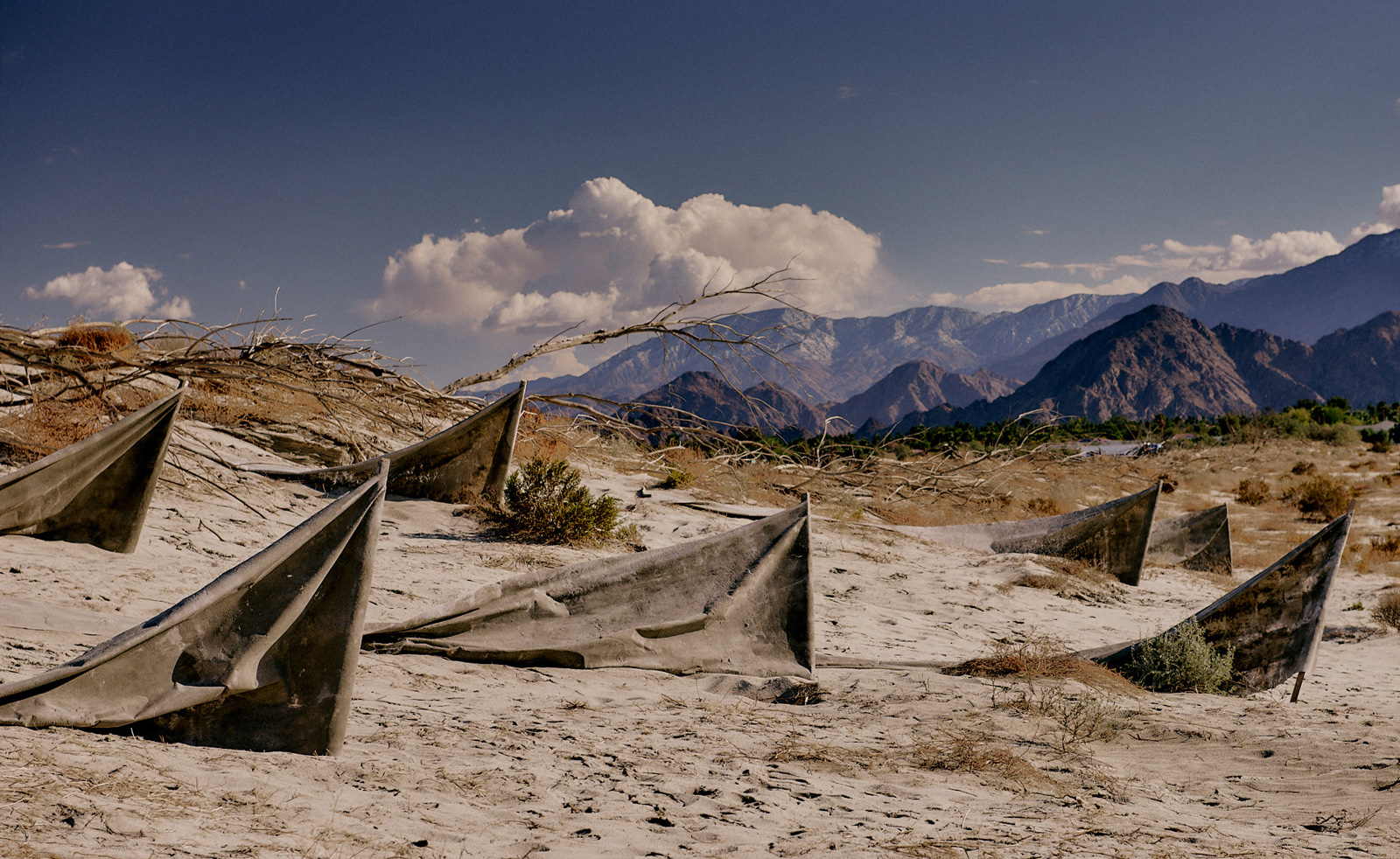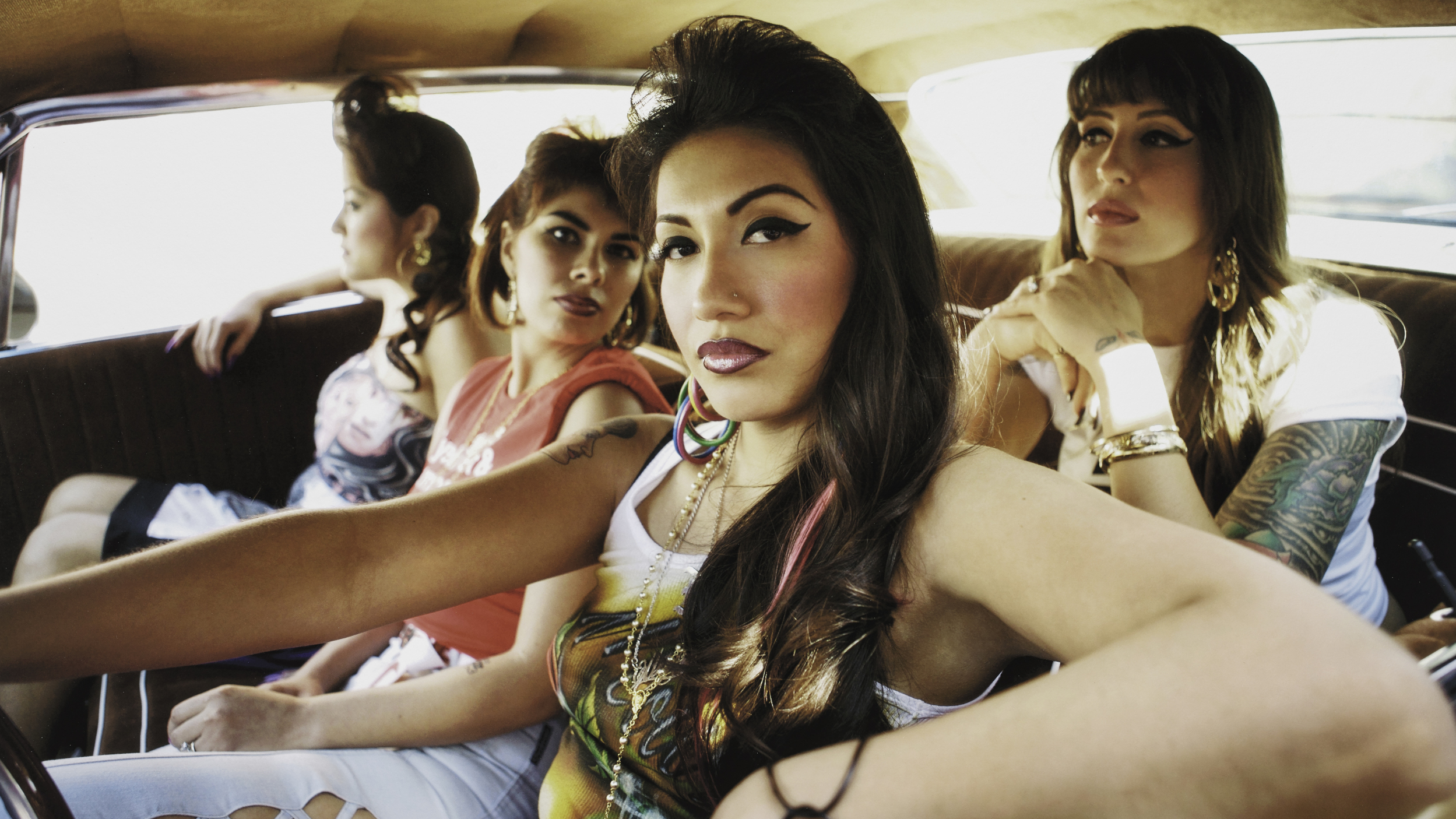Thierry Dreyfus at The Invisible Dog, New York

Thierry Dreyfus has been sculpting with light for the past three decades - be it for Yves Saint Laurent and Calvin Klein fashion shows, hotels or the reopening of Paris' Grand Palais - but his new exhibition at fledgling Brooklyn gallery, The Invisible Dog Art Center, is his first major solo show of personal pieces.
Cryptically titled '(Naked) absence - (blinding) presence... (dis)appearances', it's a deliberately disorientating experience. As with most of the Frenchman's work, the show is not just about light, but the way it interacts with objects, sounds and space - a combination that has a very immersive effect on the viewer.
Step into the first room and you'll find a series of mirrors with an aged, textured surface, lit by a red wall of light. But, search for your reflection in the mirrors, and instead of seeing yourself, someone else's image might stare back at you - or their hands, a cloud or even an obscure landscape.
'Besides light, there is nothing more powerful than the mirror - a subjective hole inside reality - to attract the visitor's attention, thereby forcing one to dive into oneself,' says Dreyfus. This introspection is made strangely all the more potent by the fact that your reflection is obscured. And, with its disorientating play with light and mirror, the installation proves once again that Dreyfus is the master of refraction and reflection - as seen from his fashion shows and architectural installations.
The next room plunges you into darkness, with only the sound of Dreyfus' heartbeat for company. As its pace gradually accelerates, so the light begins to illuminate a resin figure of a man, and, when it reaches its heart attack-worthy crescendo, the light becomes so bright that the figure seems to disappear. It makes you question if it was ever there? And, if there was no light, would anything really exist?
Down in the basement of this former dog accessories factory (hence the name), Dreyfus flexes his lesser-known photography skills with a series of beautiful and haunting scenes whose dramatic location isn't revealed until you have finished your journey through them. This strips them of their historical context and subsequently Dreyfus' reason for taking them. 'If one were always to say where, to describe the intent with which a picture was taken, to express what happened when it was shot, it would blur the image and disrupt it's inner silence,' says Dreyfus. 'This intellectual idea of what might have happened "there" adds up to replace or disrupt our initial sensation. It annihilates our first feelings.'
Wallpaper* Newsletter
Receive our daily digest of inspiration, escapism and design stories from around the world direct to your inbox.
These pictures certainly evoke an emotional response - heightened all the more by the rawness of the setting. Opened a year ago as a gallery and studio, The Invisible Dog encourages its multi-disciplinary artists to take advantage of the space's idiosyncrasies and, to that end, Dreyfus has made a feature out pipes and shelves brimming with reels of ribbons and leashes. This further removes the photographs from their original context, with surprisingly powerful results.
ADDRESS
51 bergen street
Brooklyn
NY, 11201
Malaika Byng is an editor, writer and consultant covering everything from architecture, design and ecology to art and craft. She was online editor for Wallpaper* magazine for three years and more recently editor of Crafts magazine, until she decided to go freelance in 2022. Based in London, she now writes for the Financial Times, Metropolis, Kinfolk and The Plant, among others.
-
 Warp Records announces its first event in over a decade at the Barbican
Warp Records announces its first event in over a decade at the Barbican‘A Warp Happening,' landing 14 June, is guaranteed to be an epic day out
By Tianna Williams
-
 Cure your ‘beauty burnout’ with Kindred Black’s artisanal glassware
Cure your ‘beauty burnout’ with Kindred Black’s artisanal glasswareDoes a cure for ‘beauty burnout’ lie in bespoke design? The founders of Kindred Black think so. Here, they talk Wallpaper* through the brand’s latest made-to-order venture
By India Birgitta Jarvis
-
 The UK AIDS Memorial Quilt will be shown at Tate Modern
The UK AIDS Memorial Quilt will be shown at Tate ModernThe 42-panel quilt, which commemorates those affected by HIV and AIDS, will be displayed in Tate Modern’s Turbine Hall in June 2025
By Anna Solomon
-
 Leonard Baby's paintings reflect on his fundamentalist upbringing, a decade after he left the church
Leonard Baby's paintings reflect on his fundamentalist upbringing, a decade after he left the churchThe American artist considers depression and the suppressed queerness of his childhood in a series of intensely personal paintings, on show at Half Gallery, New York
By Orla Brennan
-
 Desert X 2025 review: a new American dream grows in the Coachella Valley
Desert X 2025 review: a new American dream grows in the Coachella ValleyWill Jennings reports from the epic California art festival. Here are the highlights
By Will Jennings
-
 This rainbow-coloured flower show was inspired by Luis Barragán's architecture
This rainbow-coloured flower show was inspired by Luis Barragán's architectureModernism shows off its flowery side at the New York Botanical Garden's annual orchid show.
By Tianna Williams
-
 ‘Psychedelic art palace’ Meow Wolf is coming to New York
‘Psychedelic art palace’ Meow Wolf is coming to New YorkThe ultimate immersive exhibition, which combines art and theatre in its surreal shows, is opening a seventh outpost in The Seaport neighbourhood
By Anna Solomon
-
 Wim Wenders’ photographs of moody Americana capture the themes in the director’s iconic films
Wim Wenders’ photographs of moody Americana capture the themes in the director’s iconic films'Driving without a destination is my greatest passion,' says Wenders. whose new exhibition has opened in New York’s Howard Greenberg Gallery
By Osman Can Yerebakan
-
 20 years on, ‘The Gates’ makes a digital return to Central Park
20 years on, ‘The Gates’ makes a digital return to Central ParkThe 2005 installation ‘The Gates’ by Christo and Jeanne-Claude marks its 20th anniversary with a digital comeback, relived through the lens of your phone
By Tianna Williams
-
 In ‘The Last Showgirl’, nostalgia is a drug like any other
In ‘The Last Showgirl’, nostalgia is a drug like any otherGia Coppola takes us to Las Vegas after the party has ended in new film starring Pamela Anderson, The Last Showgirl
By Billie Walker
-
 ‘American Photography’: centuries-spanning show reveals timely truths
‘American Photography’: centuries-spanning show reveals timely truthsAt the Rijksmuseum in Amsterdam, Europe’s first major survey of American photography reveals the contradictions and complexities that have long defined this world superpower
By Daisy Woodward